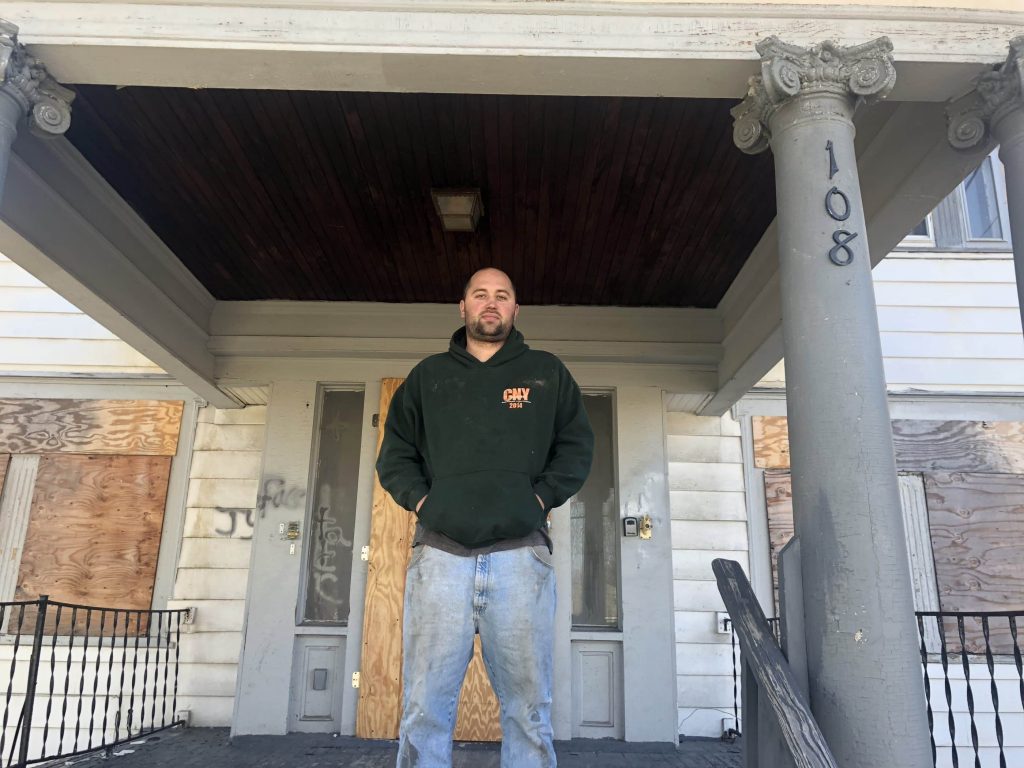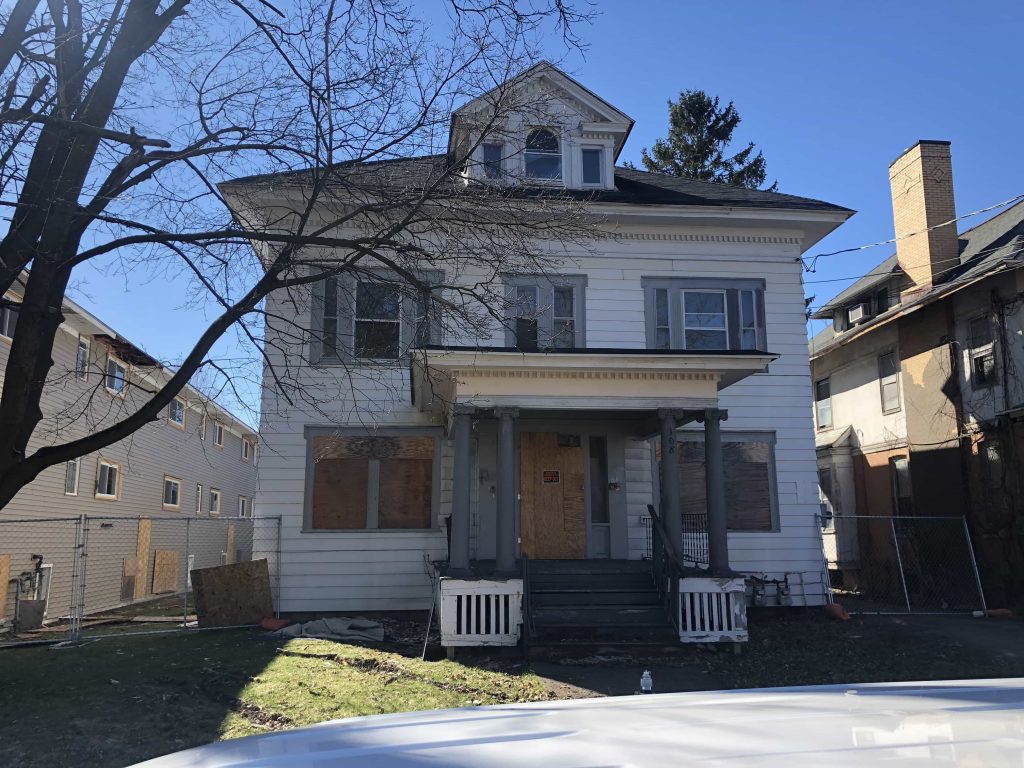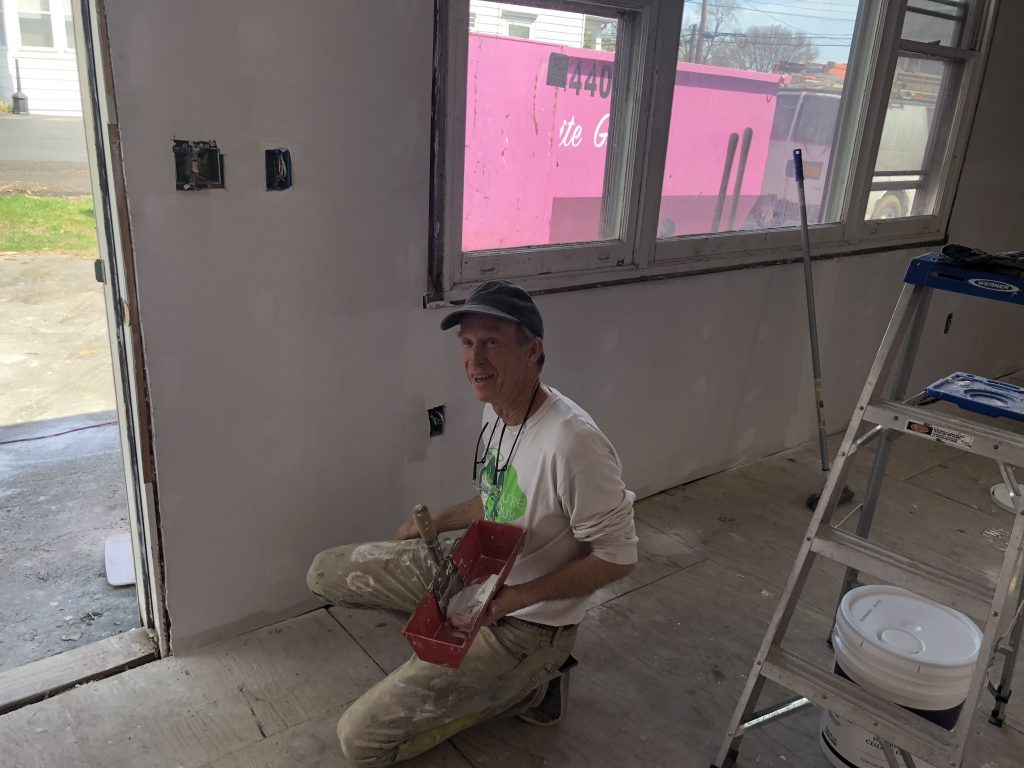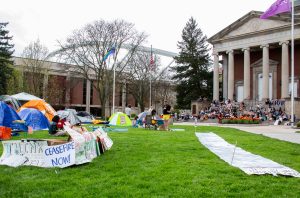Former mailman builds life from Syracuse’s vacant housing woes
Ex-mailman builds life from Syracuse’s vacant housing

In his former life as a postal worker, Paul Finch could have been delivering foreclosure warnings to homeowners caught up in America’s financial crisis a decade ago.
But Finch escaped that fate having lost his letter carrier job in 2007 just before the housing market collapsed. Looking back now, the 34 year old considers that moment his escape from career purgatory.
“I was working a lot of hours and I said, wow, this is horrible,” Finch said. “I made really good money, but at the same time I had no life.”
Finch moved into construction. Then a neighbor offered him her house and he bought it for $57,000 in 2010, flipping it a year later for $94,000, according to Onondaga County records. The first profit felt easy, so he entered the housing industry that cost him his first career.
Finch learned from YouTube about revitalizing real estate and borrowed tools from his pastor. He battled Syracuse’s vacant property issue on the front lines and said he nearly doubled the value of some. His ventures also brought him near bankruptcy and he grew frustrated with the way Syracuse handles its abandoned homes.
According to city records, 1,767 properties sat empty around Syracuse in July 2018 — in overdue by $86.78 million in property taxes. A 2018 U.S. Census Survey estimated that 12 percent of units nationwide are vacant, compared to 4 percent in Syracuse.
“Everyone thinks they can do it,” Finch said. “It’s tough. There was a time when I owned about four or five houses, and I had $300 in my bank account because I spent everything that I invested. I remember living in my house, and National Grid was going to come shut my power off.”

The property at 108 Onondaga Ave. in Syracuse during its restoration.

Subcontractor Patrick Coyne paints inside another of Paul Finch's properties at 237 Kinne St.
He recovered by working 16-hour days for two straight years. During that time, he turned a $43,500 property into a $77,900 sale on Court Street. His $1 purchase on John Street in 2017 sold for $41,000 that same year, per real estate records. Finch said he currently employs six subcontractors and works with two real estate agents, Esmir Omerivic and Vendin Miskic.
The trio hired, Amy Finch, Paul’s sister, as their property manager. She remembered visiting his first house and could not believe how quickly Finch developed it.
“It’s scary at first,” she said. “You don’t know how it could possibly be done. We have to think about a budget, and Paul will go through and he could point something out and give you a price.”
Miskic said competition to buy properties in Syracuse is high. Out-of-state investors told him it’s a great market, “and it was a great market up until everybody started hearing about it, and now everybody’s coming here and overpaying for these properties.”
The vacant housing problem, he said, stems from location. A unit he considered among his nicest, on Parkway Drive in Southside, only sold after he lowered the rent for four months.
Finch and his partner, Leonard Fallis, ventured into Southside anyway. Around 2011, a four-family house on Onondaga Avenue went vacant. To its right, Finch said the “110 gang” operated in an abandoned 34-unit apartment complex. The census tract it is located in has a 28 percent vacancy rate.
The house at 108 Onondaga Ave. was built in the 1920s as a mansion for someone in the cheese business, Finch said. Deutsche Bank claimed 108-110 Onondaga Ave. from a developer who couldn’t complete their restoration. Finch wanted the 110 complex, but said the bank forced them to take the giant house with the wooden plank on the front door as part of a $350,000 deal, per Onondaga records.
With his iPhone flashlight, Finch scanned the house’s dark halls and sighed. The foundation needs to be replaced, a hole in the roof looms over an upstairs bedroom. The floors slant from the broken foundation. Finch said the building could be saved, but not economically.
“The issue is the area,” he said. “If we put $125,000 into it, this house would only be worth $75,000.”
Greater Syracuse Land Bank’s director Katelyn Wright said they demolish vacant houses like 108 Onondaga Ave. that have extensive fire, water or structural damage. She estimated it costs $25,000 to tear down a house. They’re currently holding about 250 houses that need demolition, she said, but have money to destroy 56.
The Land Bank formed in 2012 to sell properties behind two or more years on property taxes. Facing rising costs, it denied outright demolition candidates for an entire year, Wright said.
Vacant houses can decrease the value of homes around them. That hurts the wealth of nearby owners and could stop them from investing in their own maintenance. Demolition is one solution, but Wright said houses generate between $3,500-5,500 in property taxes. Vacant lots only stimulate about $200 for the city per year.
Finch said the Land Bank scares away local investors by charging money for properties with little value. He said they also place demands on how restoration is done.
“Instead of tearing them down for $30,000,” he said. “Give the houses away, and give (investors) $30,000, so it gets back on the tax rolls.”
Wright said the Land Bank is not in a legal position to grant incentives. They list a price and lower it if there is no demand. She said the city grants tax breaks for seven years to people who renovate a vacant building.
“If we’re going to sell it for $3,500, or if we’re going to sell it for $1, that’s not going to be what makes or breaks their budget,” Wright said. “It’s the issue that we need to find a way to subsidize the renovation.”
Finch is working on five other projects and said he worked enough to retire. He could destroy the building if he can’t get a grant to bridge the restoration cost. Grazing his hand along the wall, he said 108 Onondaga Ave. just needs little love.
“He seems to care too much about what he does to be honest with you,” Miskic said.





